
The Easter Rising, also known as the Easter Rebellion, was an armed insurrection in Ireland during Easter Week in April 1916. The Rising was launched by Irish republicans against British rule in Ireland with the aim of establishing an independent Irish Republic while the United Kingdom was fighting the First World War. It was the most significant uprising in Ireland since the rebellion of 1798 and the first armed conflict of the Irish revolutionary period. Sixteen of the Rising's leaders were executed starting in May 1916. The nature of the executions, and subsequent political developments, ultimately contributed to an increase in popular support for Irish independence.

Na Fianna Éireann, known as the Fianna, is an Irish nationalist youth organisation founded by Constance Markievicz in 1909, with later help from Bulmer Hobson. Fianna members were involved in setting up the Irish Volunteers, and had their own circle of the Irish Republican Brotherhood (IRB). They took part in the 1914 Howth gun-running and in the 1916 Easter Rising. They were active in the War of Independence and many took the anti-Treaty side in the Civil War.

The Irish Volunteers, also known as the Irish Volunteer Force or the Irish Volunteer Army, was a paramilitary organisation established in 1913 by nationalists and republicans in Ireland. It was ostensibly formed in response to the formation of its Irish unionist/loyalist counterpart the Ulster Volunteers in 1912, and its declared primary aim was "to secure and maintain the rights and liberties common to the whole people of Ireland". Its ranks included members of the Conradh na Gaeilge, Ancient Order of Hibernians, Sinn Féin and the Irish Republican Brotherhood. Increasing rapidly to a strength of nearly 200,000 by mid-1914, it split in September of that year over John Redmond's support for the British war effort during World War I, with the smaller group opposed to Redmond's decision retaining the name "Irish Volunteers".

The Irish Republican Brotherhood was a secret oath-bound fraternal organisation dedicated to the establishment of an "independent democratic republic" in Ireland between 1858 and 1924. Its counterpart in the United States of America was initially the Fenian Brotherhood, but from the 1870s it was Clan na Gael. The members of both wings of the movement are often referred to as "Fenians". The IRB played an important role in the history of Ireland, as the chief advocate of republicanism during the campaign for Ireland's independence from the United Kingdom, successor to movements such as the United Irishmen of the 1790s and the Young Irelanders of the 1840s.

Thomas James Clarke was an Irish republican and a leader of the Irish Republican Brotherhood. Clarke was arguably the person most responsible for the 1916 Easter Rising. A proponent of armed struggle against British rule in Ireland for most of his life, Clarke spent 15 years in English prisons prior to his role in the Easter Rising, and was executed by firing squad after it was defeated.
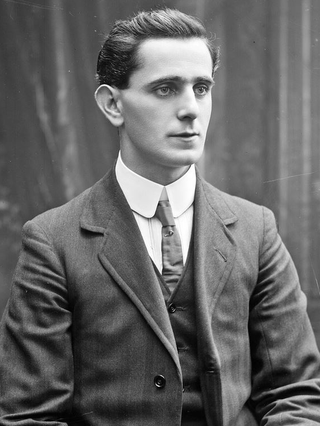
Seán Mac Diarmada, also known as Seán MacDermott, was an Irish republican political activist and revolutionary leader. He was one of the seven leaders of the Easter Rising of 1916, which he helped to organise as a member of the Military Committee of the Irish Republican Brotherhood (IRB) and was the second signatory of the Proclamation of the Irish Republic. He was executed for his part in the Rising at age 33.

Denis McCullough was a prominent Irish nationalist political activist in the early 20th century, who served as President of the Irish Republican Brotherhood (IRB) from 1915 to 1916.

The Irish Citizen Army, or ICA, was a small paramilitary group of trained trade union volunteers from the Irish Transport and General Workers' Union (ITGWU) established in Dublin for the defence of workers' demonstrations from the Dublin Metropolitan Police. It was formed by James Larkin, James Connolly and Jack White on 23 November 1913. Other prominent members included Seán O'Casey, Constance Markievicz, Francis Sheehy-Skeffington, P. T. Daly and Kit Poole. In 1916, it took part in the Easter Rising, an armed insurrection aimed at ending British rule in Ireland.
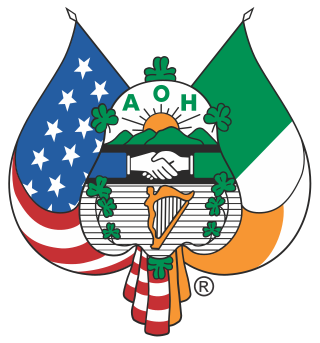
The Ancient Order of Hibernians is an Irish Catholic fraternal organization. Members must be male, Catholic, and either born in Ireland or of Irish descent. Its largest membership is in the United States, where it was founded in New York City in 1836.

Thomas Patrick Ashe was a member of the Gaelic League, the Gaelic Athletic Association, the Irish Republican Brotherhood (IRB) and a founding member of the Irish Volunteers.

James Joseph Walsh, generally referred to as J. J. Walsh, was Postmaster General, of the Irish Free State from 1923 to 1927. He was also a senior Gaelic Athletic Association organiser and Cumann na nGaedheal politician. Later, Walsh had heavy connections with fascism, including his association with Ailtirí na hAiséirghe.
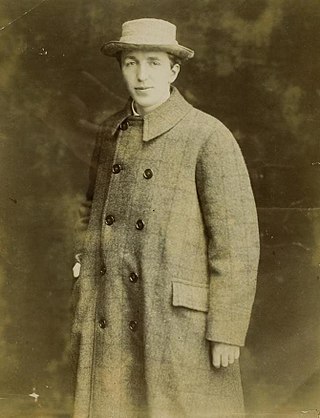
John Bulmer Hobson was an Irish republican. He was a leading member of the Irish Volunteers and the Irish Republican Brotherhood (IRB) before the Easter Rising in 1916. Hobson swore Patrick Pearse into membership of the IRB in late 1913. He opposed and attempted to prevent the Easter Rising. Hobson was also chief of staff of Fianna Éireann, which he helped to found.

Protestant Irish Nationalists are adherents of Protestantism in Ireland who also support Irish nationalism. Protestants have played a large role in the development of Irish nationalism since the eighteenth century, despite most Irish nationalists historically being from the Irish Catholic majority, as well as most Irish Protestants usually tending toward unionism in Ireland. Protestant nationalists have consistently been influential supporters and leaders of various movements for the political independence of Ireland from Great Britain. Historically, these movements ranged from supporting the legislative independence of the Parliament of the Kingdom of Ireland, to a form of home rule within the United Kingdom of Great Britain and Ireland, to complete independence in an Irish Republic and a United Ireland.
Richard "Dick" McKee was a prominent member of the Irish Republican Army (IRA). He was also friend to some senior members in the republican movement, including Éamon de Valera, Austin Stack and Michael Collins. Along with Peadar Clancy and Conor Clune, he was killed by his captors in Dublin Castle on Sunday, 21 November 1920, a day known as Bloody Sunday that also saw the killing of a network of British intelligence agents by the "Squad" unit of the Irish Republican Army and the killing of 14 people in Croke Park by the Royal Irish Constabulary (RIC).
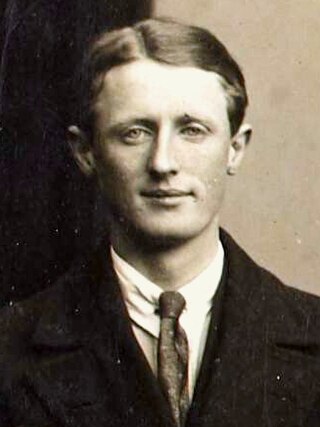
Joseph Aloysius Sweeney was an Irish politician and military commander. He fought in the Easter Rising in the GPO and was a member of the IRA during the war of independence. He later became Chief of Staff of the Irish Army.
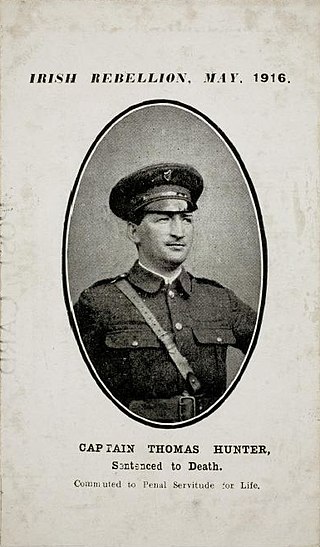
Thomas Cornelius Hunter was a militant Irish republican. He was a member of the Irish Republican Brotherhood (IRB), Sinn Féin, the Irish Volunteers, was twice elected to the Irish parliament, Dáil Éireann, and fought against the forces of the Irish Free State as a member of the Irish Republican Army during the Irish Civil War. While not widely known today, he was present at or directly involved in several major incidents during the struggle for Irish independence from the United Kingdom of Great Britain and Ireland.

The first day of the Easter Rising, Monday, 24 April 1916, saw some 1,200 volunteer soldiers of the Irish Volunteers take over positions in the centre of Dublin, launching the week-long revolution known as the Easter Rising.
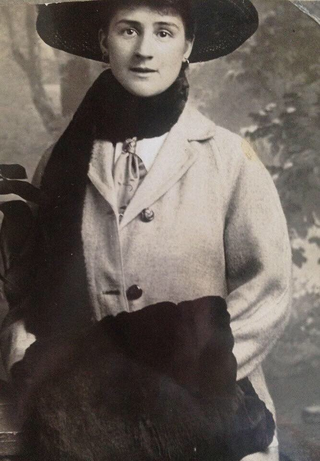
Lucy Agnes Smyth Byrne (1882–1972) was an officer in Cumann na mBan, an Irish republican women's paramilitary organisation, during the time of the 1916 Easter Rising. She played a prominent role in the organisation as she was the section leader of its Central branch, and eventually in later years became its 1st Lieutenant.
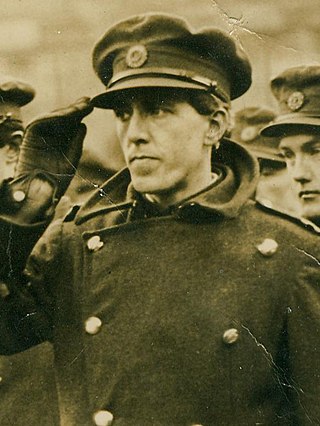
Seán MacMahon was an Irish nationalist who fought in the 1916 rising. He took the pro-treaty side in the Irish Civil War (1922–23) and rose to be chief of staff of the Irish Defence Forces

Bridget Connolly was an Irish nationalist and republican, active during the Easter Rising of 1916 and believed to be the only person from County Carlow to be in the General Post Office, Dublin, during the Easter Rising. She also served during both the War of Independence and the Irish Civil War.



















